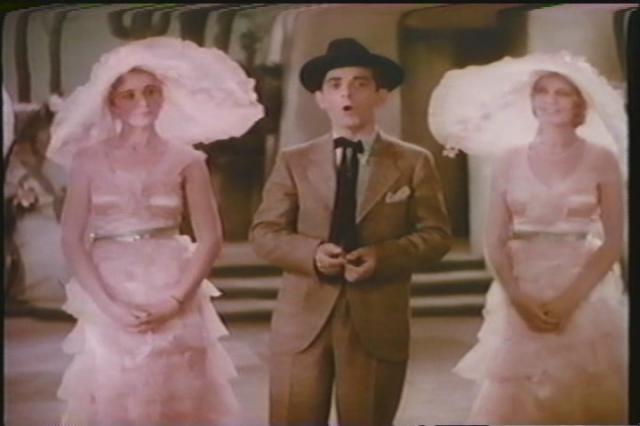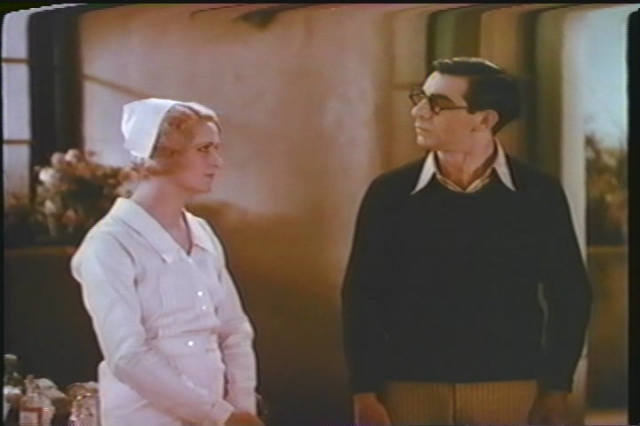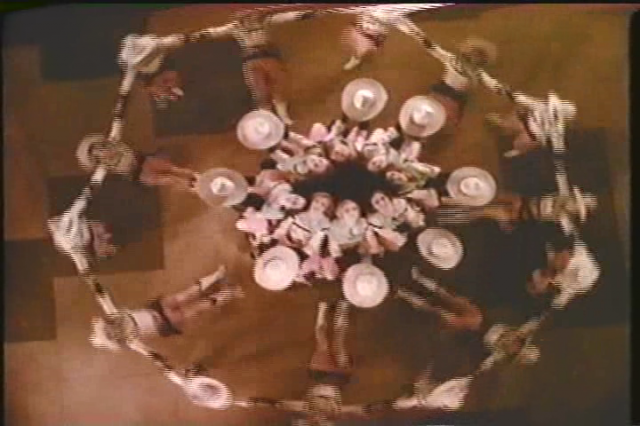|
Genres, Themes, Actors, and Directors:
- Busby Berkeley Films
- Comedy
- Cross-Cultural Romance
- Eddie Cantor Films
- Musicals
- Native Americans
- Play Adaptation
Review:
Adapted from Flo Ziegfield’s popular Broadway musical (itself based on Owen Davis’s comedic play The Nervous Wreck), Whoopee! was the film that jump-started Eddie Cantor’s cinematic career, and remains a compelling showcase of his nebbishy, eye-rolling wit. The story — romantic fluff at its tritest — is really just an excuse for Ziegfield’s “girls” to strut their stuff (courtesy of Busby Berkeley’s iconic choreography) and for Cantor to sling one-liners left and right; when he drolly intones “Last week I looked so terrible, two undertakers left a deposit on me”, his influence on Woody Allen couldn’t be more distinct. Unfortunately, we’re forced to suffer through Cantor in characteristic blackface for a good section of the film, with the worst moment occurring when the cluelessly soot-covered Cantor greets Hunt, who responds with a hostile “How dare you speak to me!”.
Barring this — and the use of cliched jokes about Native Americans — the remainder of the film is essentially an innocuous tale of mistaken identities and unrequited love, with Ethel Shutta particularly appealing as Cantor’s feisty love interest; she more than holds her own in concert with him. Also notable are Gus Kahn’s lyrics, which are quite fun (note in particular the clever stanzas in “A Girl Friend of a Boy Friend of Mine”). Strangely enough, Cantor’s rendition of the famed title song (“Making Whoopee”) is lackluster and too-slow; he’s much livelier when singing a spoof later on, “Making Waffles” (pronounced, curiously enough, like “Making Raffles”).
Note: Famed cinematographers Lee Garmes and Gregg Toland both served as DPs on the project, but what’s most noticeable about the film’s “look” is the effective use of two-tone Technicolor.
Redeeming Qualities and Moments:
- Plenty of zingy one-liners by Cantor

- Ethel Shutta as Cantor’s romantically inclined nurse

- Some fun Busby Berkeley productions

Must See?
Yes, simply as a representative (and reasonably enjoyable) Eddie Cantor film.
Categories
Links:
|